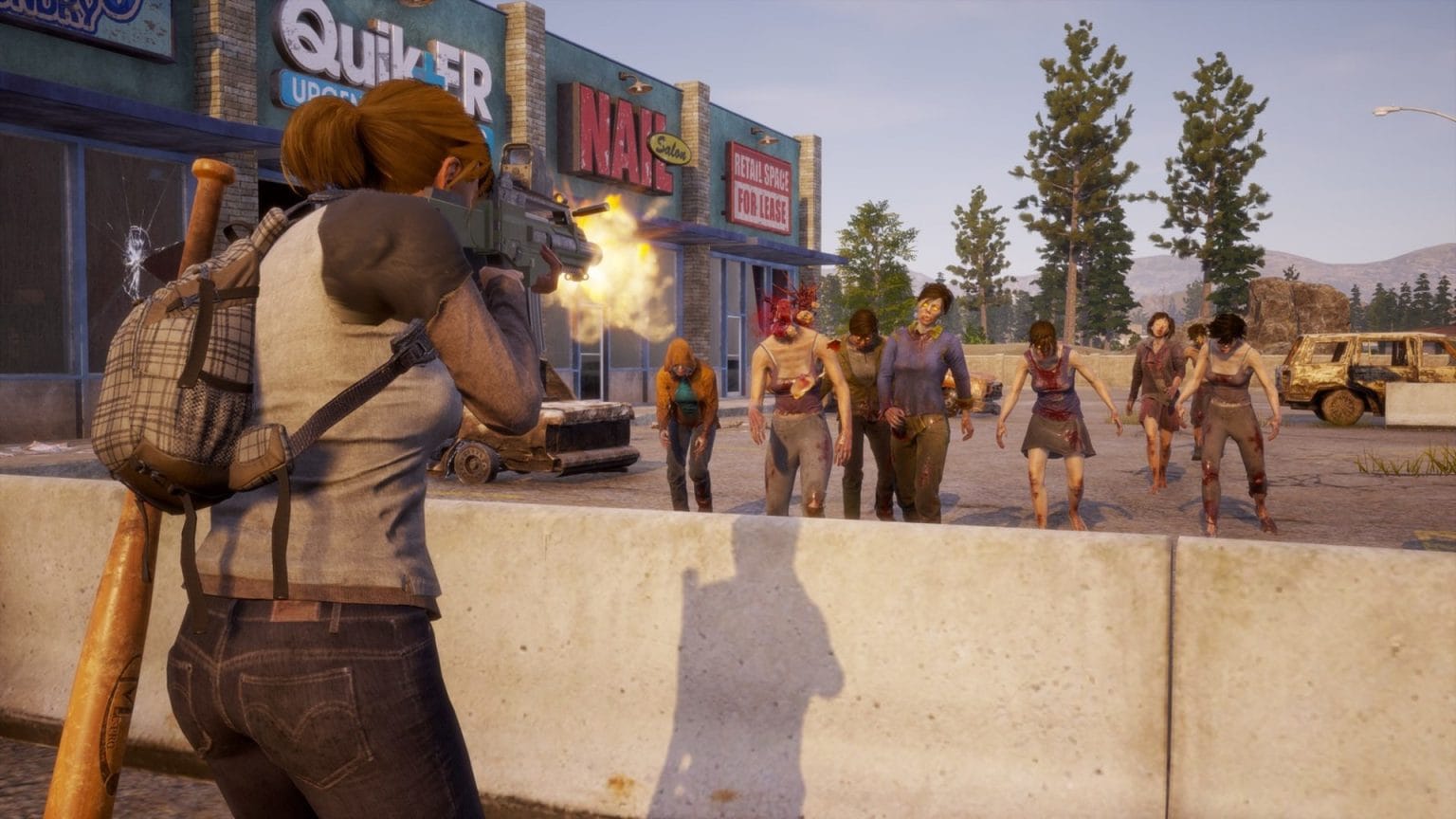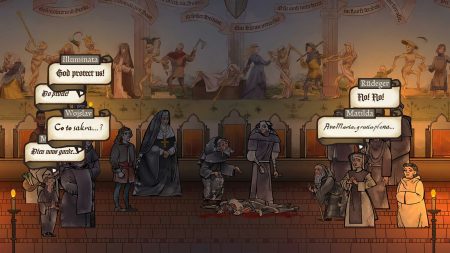Subtraction by Addition
I recently tried my hand at State of Decay 2, an Xbox One/PC exclusive where the player attempts to build a functioning community in a world ravaged by a zombie apocalypse. The game doesn’t appear to have a single committed storyline, opting instead to offer multiple story packages that establish some character background and ultimately lead to procedurally generated character interactions and plotlines.
When a dedicated, fully fleshed-out story doesn’t exist in a game, it must either A) completely eschew the idea of a story at all or B) present plenty of room for open-ended narrative interpretations if it expects anyone to take it seriously. In its efforts to focus on expanding systems and provide an immersive, open-ended zombie experience, State of Decay 2 fails on both fronts, instead presenting a game with virtually no narrative significance that doesn’t feel especially great to play.

Not a Shred of Immersion
The State of Decay sequel’s failure as a video game is not in and of itself anything unique or even unexpected (Microsoft’s exclusive game lineup has not been especially inspiring as of late). But its foundering reflects something that greatly disturbs me about the gaming industry at large: games that try to do too much at the expense of doing anything particularly well.
Here’s a list of just a few systems State of Decay 2 forces the player to learn in order to play the game:
-Holding a button for a long time to open a crate in search of various supplies that you may or may not need
-Holding an additional button to open the crate faster, only it adds the risk of making noise that will draw the attention of nearby zombies
-Carrying a limited number of melee weapons that apparently break fairly easily
-Having to clear out a house of zombies in order to turn that house into a safe space
-Needing to climb a tower or to the roof of a house in order to identify locations from a distance with binoculars
-Recruiting people to my settlement almost entirely based on their usefulness, i.e. doctors, carpenters, etc.
For people who enjoy games with tons of systems like these that try to make the experience feel more “authentic,” State of Decay 2 certainly offers something in the way of complexity. Still, much of that complexity blocks out any narrative meaning or muddies the flow of the game, rendering it difficult to enjoy because of frustrating interruptions. You may have fun mowing over zombies in your car, but gasoline is scarce, so you have to limit your zombie-ramming time. Searching houses and abandoned buildings for supplies presents the fear and dread often found in well-made horror games, but limited carrying space and the clunky partner AI make many of these expeditions pointless and annoying. The combat is solid, but most zombies don’t present much of a challenge to begin with, making the player question just how bad this zombie apocalypse really is.
I appreciate and respect any time a developer wants to add interesting systems to make a game more immersive, but sometimes too many systems create a messy, incoherent experience. If State of Decay 2 is supposed to be about the importance of survival, why does it feel like none of the characters matter beyond how practical they are? If the game is supposed to be especially immersive, why do so many of the systems make simple tasks seem unnecessarily difficult? So often, games that strive for immersion at the cost of story end up becoming the very clichéd busywork they hoped to avoid.

What We Can Learn from State of Decay 2
State of Decay 2 might be the worst game I’ve played so far in 2018, and its flaws highlight why I enjoy the games that I do. The game wants you to believe you are in a dangerous zombieland, but its lack of coherent plotlines (along with bad writing and completely wooden voice acting) make it more of an amusement park where all the good rides have super long lines. Even if you don’t care about story at all, the constant waves of mundane tasks and systems within other bad systems interrupt any flow of enjoyment. State of Decay 2 does a lot of different things, but few of them well.
After playing about an hour or so of SoD2, I tried to cleanse my gaming palette with two of my favorite games of the past few years: Rocket League and Wolfenstein II: The New Colossus. In Rocket League, you have a creative sports sim with damn-near perfect controls and not a shred of lore or plot to muddy or distract from the experience. In Wolfenstein II, you have a largely generic shooter that nails world-building and emotionally-charged storytelling in ways every linear game should hope to achieve.
What makes those two games special? They never try to be more than what they are. Rocket League doesn’t bother with a story or detailed single-player mode, and Wolfenstein II forgoes the unnecessary inclusion of yet another multiplayer shooter mode. They stick to what they do best, and never try to be everything to everyone.
This is State of Decay 2’s greatest mistake: in attempting to be too wide-ranging (especially on a relatively small budget), it ends up presenting a hollow, aimless experience that doesn’t even feel good to play. A Jack of All Trades, Master of None.
Developers should try and learn from State of Decay 2’s complete inability to succeed as a coherent product. Want to add procedurally generated characters? Fine, but their dialogue better be good. Want to make simple tasks more “realistic”? Go for it, but make sure such systems serve a greater narrative purpose. Want to add a complicated list of different skills and abilities for each character? Knock yourself out, as long as it doesn’t break immersion. Essentially, make sure each system enhances the greater purpose of the game, or at the very least doesn’t get in the way.
State of Decay 2 is really just another bad game in an endless sea of new releases. Still, I hope gamers and critics alike recognize that it’s a product of a dreadful movement to make games far more complicated than they need to be.
Sam has been playing video games since his earliest years and has been writing about them since 2016. He’s a big fan of Nintendo games and complaining about The Last of Us Part II. You either agree wholeheartedly with his opinions or despise them. There is no in between.
A lifelong New Yorker, Sam views gaming as far more than a silly little pastime, and hopes though critical analysis and in-depth reviews to better understand the medium's artistic merit.
Twitter: @sam_martinelli.











